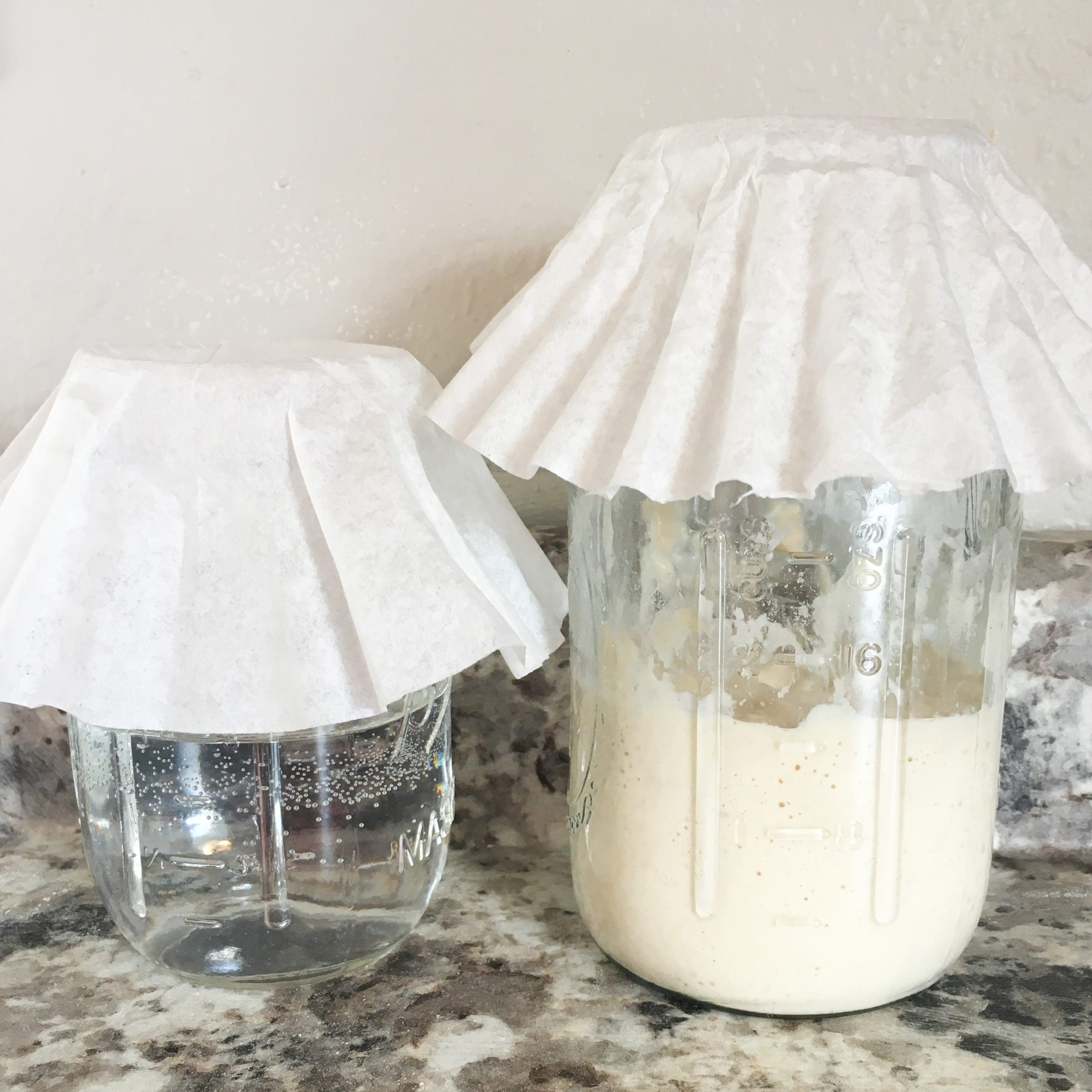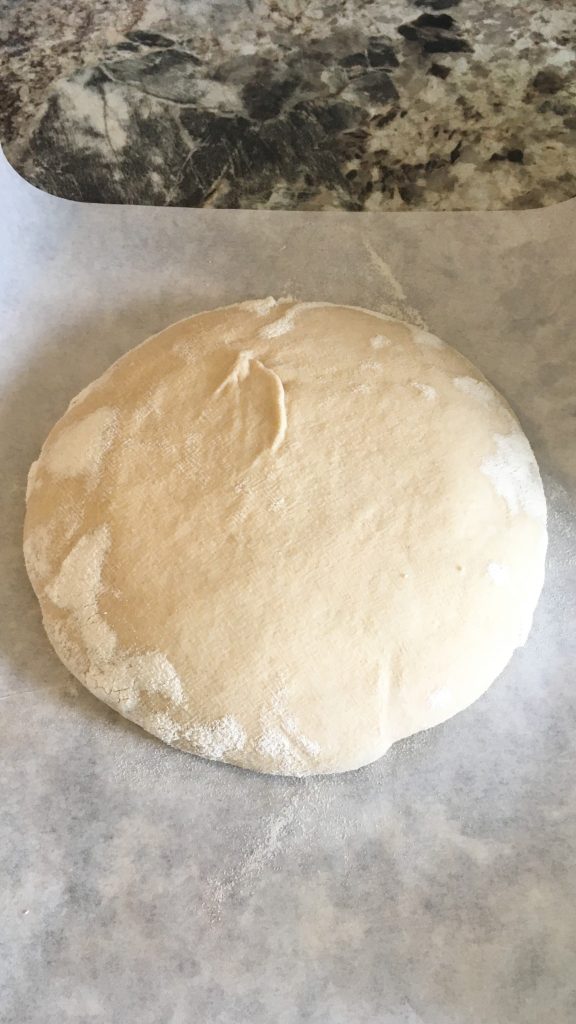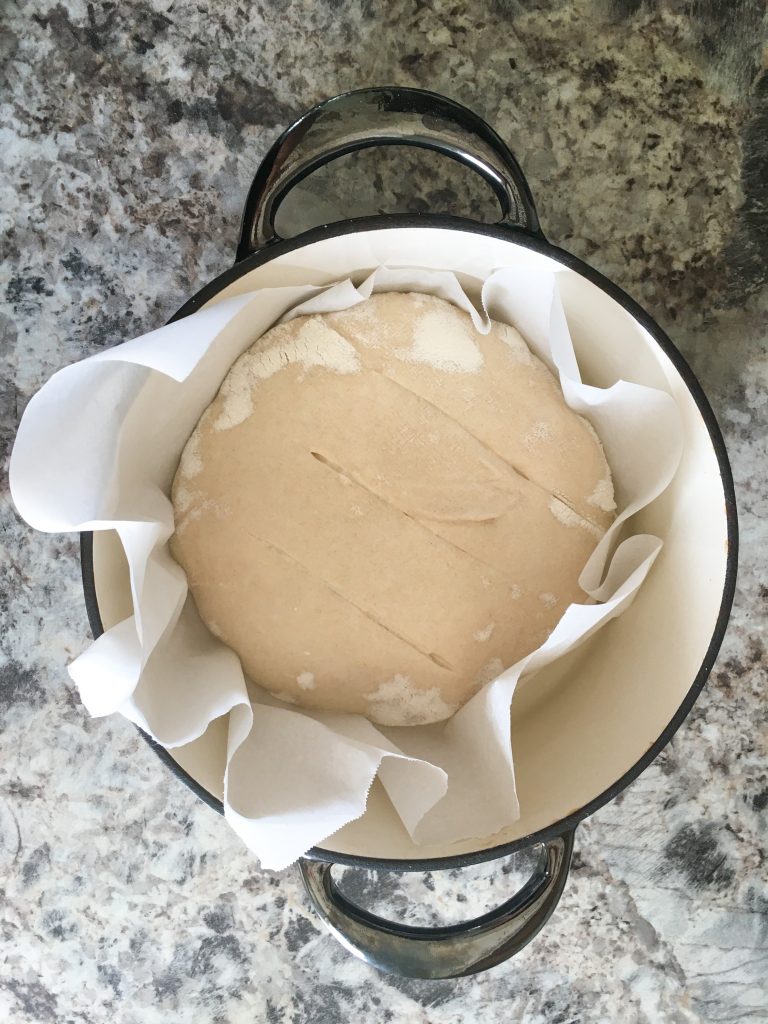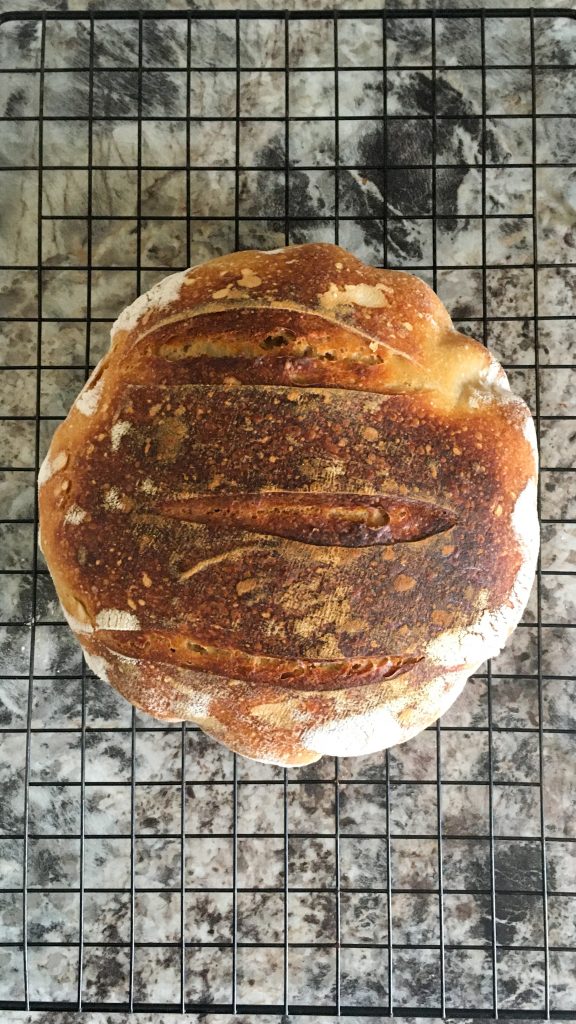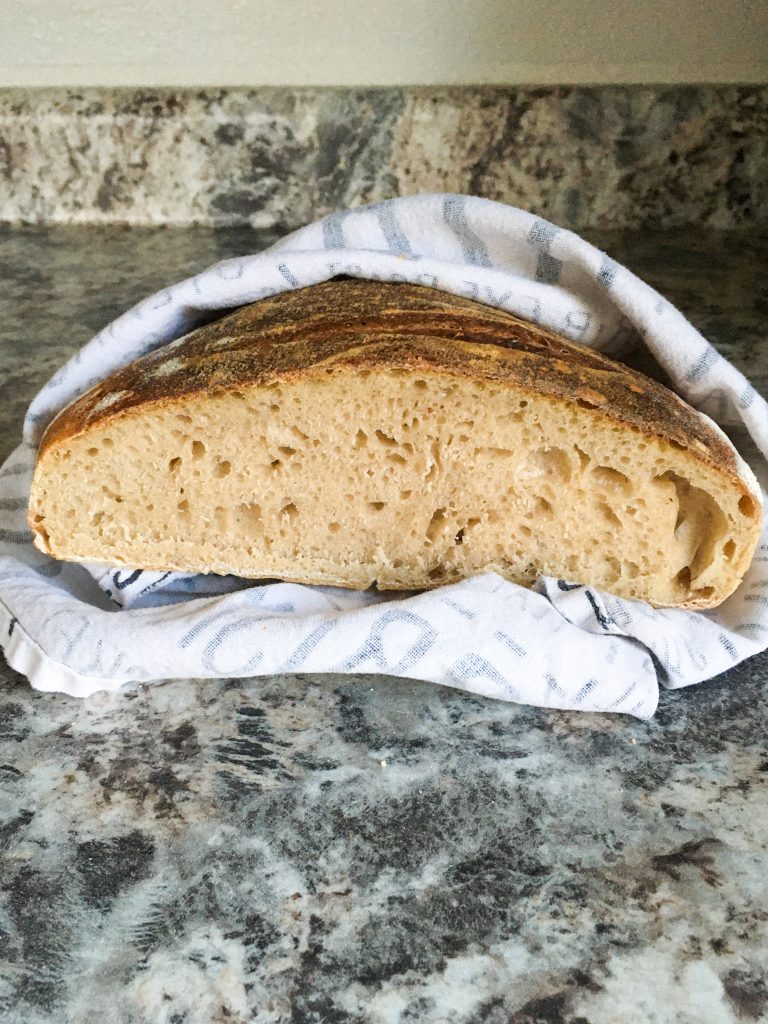What I learned and what to definitely not do.
I shared on Facebook and Instagram last month that I had started growing my own little sourdough starter. I actually started one in March too, but it didn’t make it very long before I decided that the rule not to use chlorinated tap water was more of a suggestion than a rule. I was wrong, as evidenced by my dead starter (RIP Starter 1).
So that’s lesson one — don’t use chlorinated tap water straight out of the tap.
The good news is all you need to do is let your water sit on the counter loosely covered overnight and the chlorine will evaporate to a starter–friendly level, so you don’t need to buy special unchlorinated starter water.
I re-grouped about a week after Starter 1 died and decided to try again.
Starter 2 has had infinitely more luck than Starter 1, so this week I decided it was time to put this thing to work and make it earn its daily half cup of flour.
I used the Beginner Sourdough Bread recipe from The Prairie Homestead and, since I’ve never done this before, just followed pretty much exactly what it said.
Jill has excellent resources for starting your own culture, troubleshooting when it does weird stuff (like die, RIP Starter 1), and using it in all kinds of recipes. If you’re interested in doing your own, I cannot recommend her website enough!
I mixed up my dough right before I went to bed and left it on the counter overnight to rise.
I was a little nervous when I checked it in the morning, because I didn’t know if it was rising enough. The house got pretty cool overnight, so I assumed that was the problem and I put it into the oven with the light on to help warm it back up for an hour or so.
In hindsight, I’ve realized that the fact I used water straight out of the tap (see note earlier on not using chlorinated water) to make my dough, probably played a role in this too.
Once the dough had warmed up a little, I kneaded it a second time and put it into a bowl lined with a well-floured tea towel to let it rise in the oven with the light on again.
I turned it out onto a piece of parchment paper to go into a dutch oven and bake. Even well floured, my dough wanted to stick to the towel when I was turning it out, but it ended up coming out mostly unscathed.
I did make one slight improvisation at this point….you’re supposed to put cornmeal in the bottom of the pan, so you don’t scorch the bottom of the bread, but I didn’t have any cornmeal, so I just sprinkled uncooked couscous in the bottom.
We’re just doing the best we can here, people.
It worked great though. No burnt bread here.
After it baked, I let it cool on the counter until I worked up my nerve to eat something that I had made with yeast I grew on my counter.
In other words, I let it cool until my husband got up and asked me if it was good and I had to either eat it or say I was scared to eat it. So I ate it.
It was good! So good! It was dense and hearty with a toasty, chewy crust and just a little bit of that sourdough flavor. Perfect for dunking or dipping or toasting or ripping it off the loaf and smearing with butter.
Definitely worth the effort.
Now on to sourdough cinnamon rolls….

